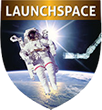Course Details
Course Summary
This training course is focused on introducing spacecraft engineers, subsystems engineers and managers to the technologies, systems and design methods that are specific to LEO satellites. The content includes satellite requirements development, design processes, technologies, systems engineering, fabrication, testing and operations in sufficient depth to ensure that attendees gain significant knowledge and understanding in these areas. The course includes practical examples to illustrate peculiarities of LEO satellites and applications.
Course Materials
Each attendee receives extensive notes and reference materials.
Who Should Attend
What You Will Learn
Course Outline
• Introduction to the LEO Satellite Community
General Overview of LEO Applications
Language of LEO Operators
Unique Aspects of LEO Operations
Examples of LEO Missions and Spacecraft
• LEO-Peculiar Satellite Systems, Applications and Operations
Configuration Drivers, Such as Attitude Stabilization and Pointing Requirements
Impacts of Drag
Impacts of Gravity Gradients
Orbital Debris Issues and Limitations
• LEO Missions, Applications and Orbital Mechanics
Low Earth Orbital Mechanics and Characteristics
Sun Sync & Non-Sun Sync
Identification of LEO Advantages
Altitude and Orbital Decay Effects
End of Life Disposal
• LEO Operations vs GEO Operations
Orbit Establishment, Initial and Maintenance Maneuvering
Stationkeeping Requirements
Orbit Changing Techniques for Altitude & Inclination
Yaw Steering
Ground Tracks
Altitude and Orbital Decay Effects and Impacts of Drag
Impacts of Gravity Gradients
Radiation Effects on Lifetime and System Degradation
Orbital Debris Issues and Limitations
• LEO Launch Vehicle Considerations, Dispensers
Launch Vehicle Requirements and Selection Criteria for LEO missions
Survey of Launch Vehicle Options
New SmallSat Launch Vehicles to be Debuted in the Next 5 to 10 Years
Special Launch Site Considerations
Multi-Satellite Deployment from Dispenser (deployment time delay, phasing, etc)
Trade-Space of Altitude vs. Inclination vs. Launch Mass
Secondary/Rideshare Payload Launch Market
• LEO Mission Design and Requirements, Definition and Architecture
Service Requirements
Mission Ground System
Launch Strategy
Payload Specification
• LEO Satellite System Engineering
Mission Drivers
Command and Control CONOPS
Payload Drivers
Deriving Satellite Requirements
Integration and Test Interfaces
• LEO Satellite Design
Satellite Trades
Defining Satellite Architecture
Payload Accommodation
Subsystems
Integration and Test
Ground Support Equipment
Manufacturability
• Summary
Mission Design Principles
LEO Satellite Design Principles
Operations and Operational Constraints
Instructor
Dr. Marshall H. Kaplan is a noted expert in aerospace systems and technologies and an internationally recognized lecturer on high technology aerospace topics. He has over 40 years of relevant experience in academia, government and industry. Dr. Kaplan has served as Chief Engineer on two large aerospace technology systems, Professor of Aerospace Engineering at a major US research university, consultant to the international satellite industry and senior advisor to the US Department of Defense and NASA. He is the author of three books including an internationally used textbook for engineers studying astronautics, Modern Spacecraft Dynamics and Control. Dr. Kaplan holds advanced degrees from M.I.T. and Stanford University. He is a Fellow of both the American Institute of Aeronautics and Astronautics (AIAA) and the American Astronautical Society (AAS). He has an extensive background in training working satellite professionals in satellite and mission design, technologies and spacecraft subsystems.
Robert A. Summers has been the Mission Systems Engineer for small satellite programs and has provided technical direction and leadership to several important NSS and Civilian Space initiatives. He has a B.S. in electrical engineering from Stanford University, a M.S. in computer science from The Johns Hopkins University, and a M.S. in technical management (with honors) from The Johns Hopkins University. Mr. Summers has served as a senior spacecraft engineer at the Applied Physics Lab. and was the Vice President of Engineering at AeroAstro, where he also served as the Chief Engineer of the Standard Interface Vehicle program.
